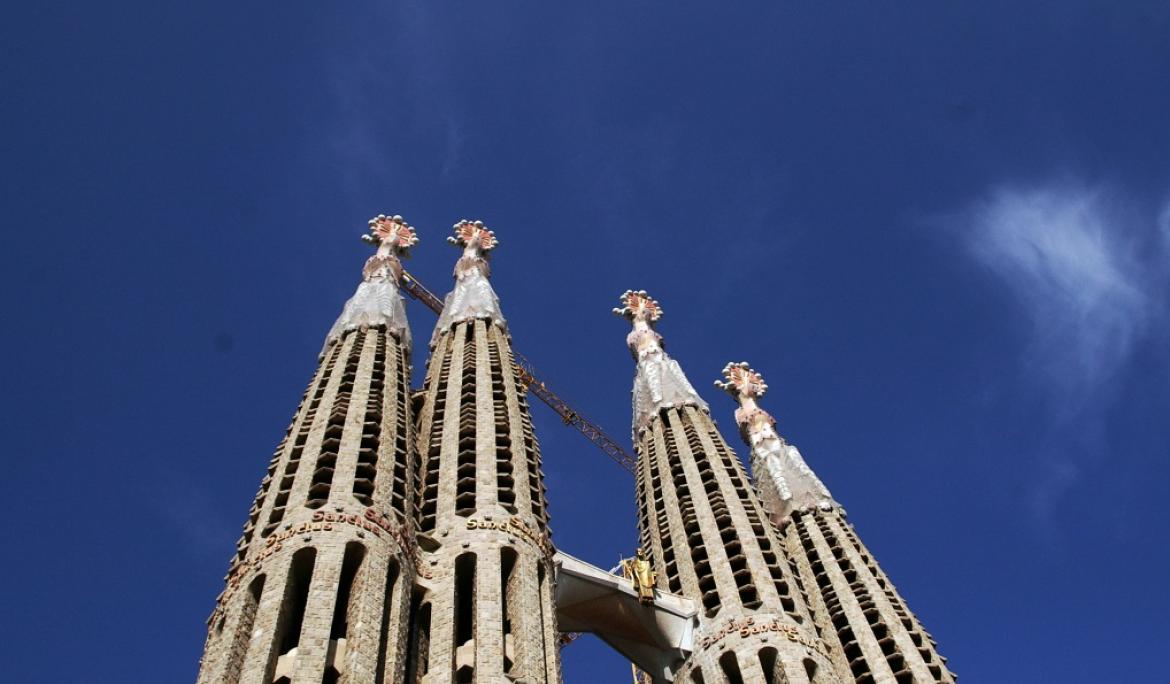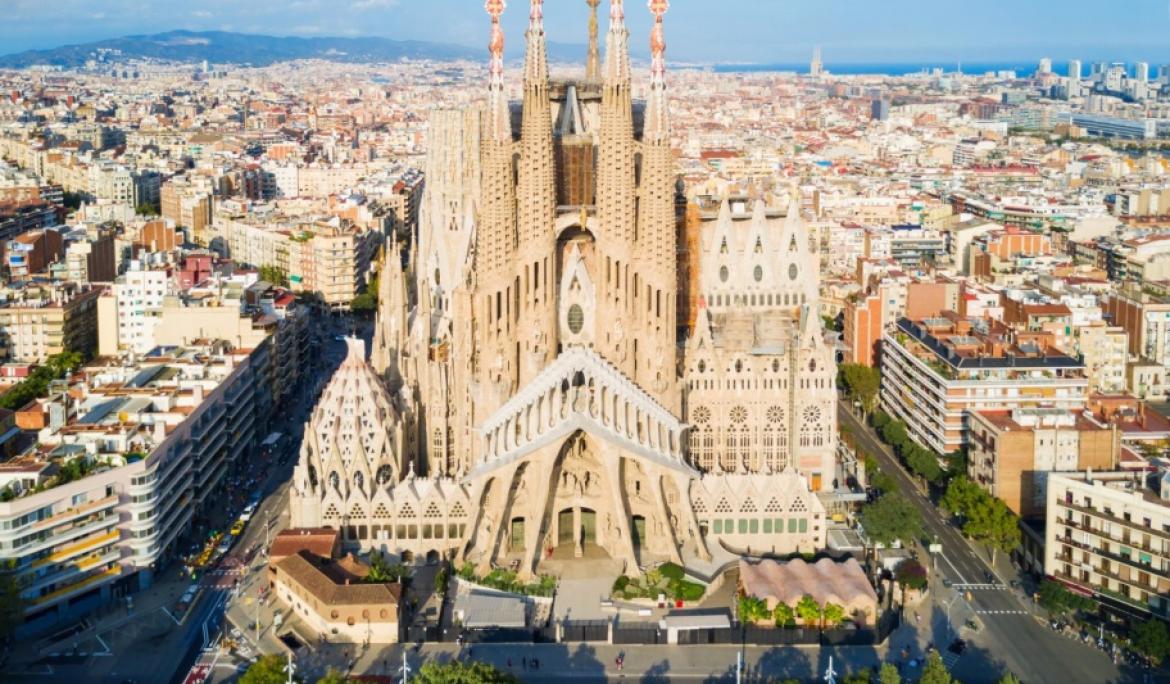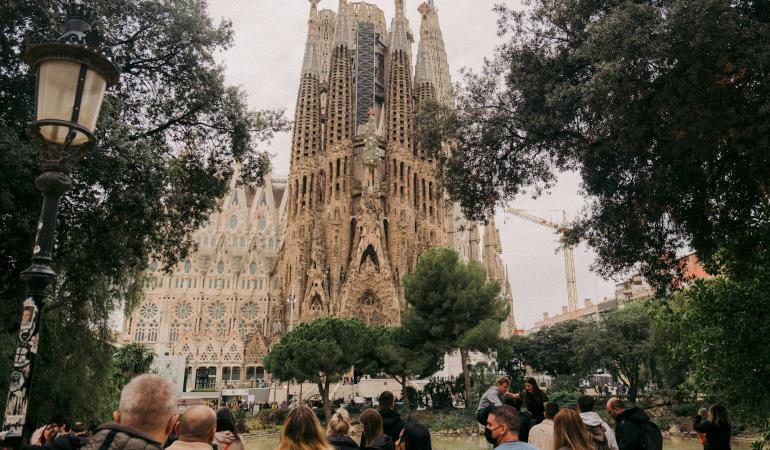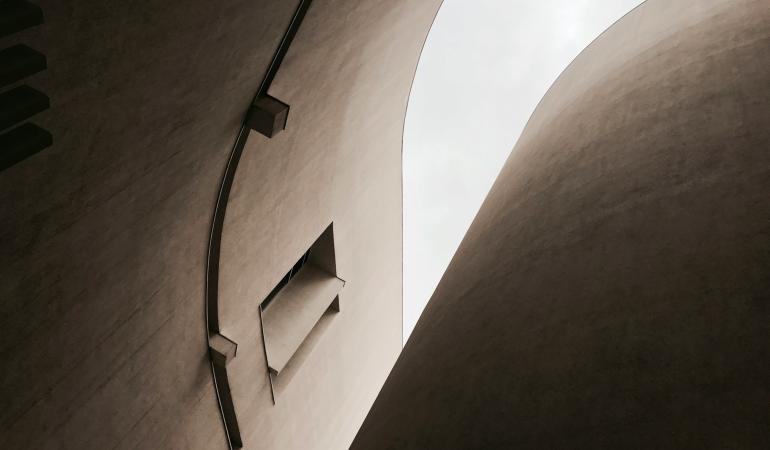The Expiatory Basilica of the Sagrada Familia is one of the most brilliant examples of Catalan modernism and the masterpiece of the brilliant architect Antoni Gaudí. The city's most visited monument can be recognized from afar by its towers rising up to the sky. Up close, its impressive facades impact the visitor. The basilica is still under construction and is not expected to be completed until 2026.

Architecture inspired by nature
Barcelona cannot be understood without the Sagrada Familia, a temple that Antoni Gaudí dedicated forty years of his life to. Its construction began in 1883 and has not yet been completed. Gaudí, aware that he would not finish his work, left the plans to his successors. Here, the architect applied all his achievements from other projects, such as the Casa Batlló, Torre Bellesguard, La Pedrera and, above all, the crypt of the Colonia Güell, to the design of the basilica.
To design the structures, Gaudí found inspiration in the shapes of nature and created columns shaped like tree trunks that convert the inside of the basilica into an enormous stone forest. Also worth mentioning are the light shafts or skylights, built with panes of gold and green glass, through which the sunlight enters creating a magical atmosphere.
But Gaudí's genius lies not only in the aesthetics but also in the technical innovations he implemented, together with other architects of the time. One of these contributions is the application of catenary arches, which allow large buildings to be constructed without the need for lateral constructions to act as buttresses.
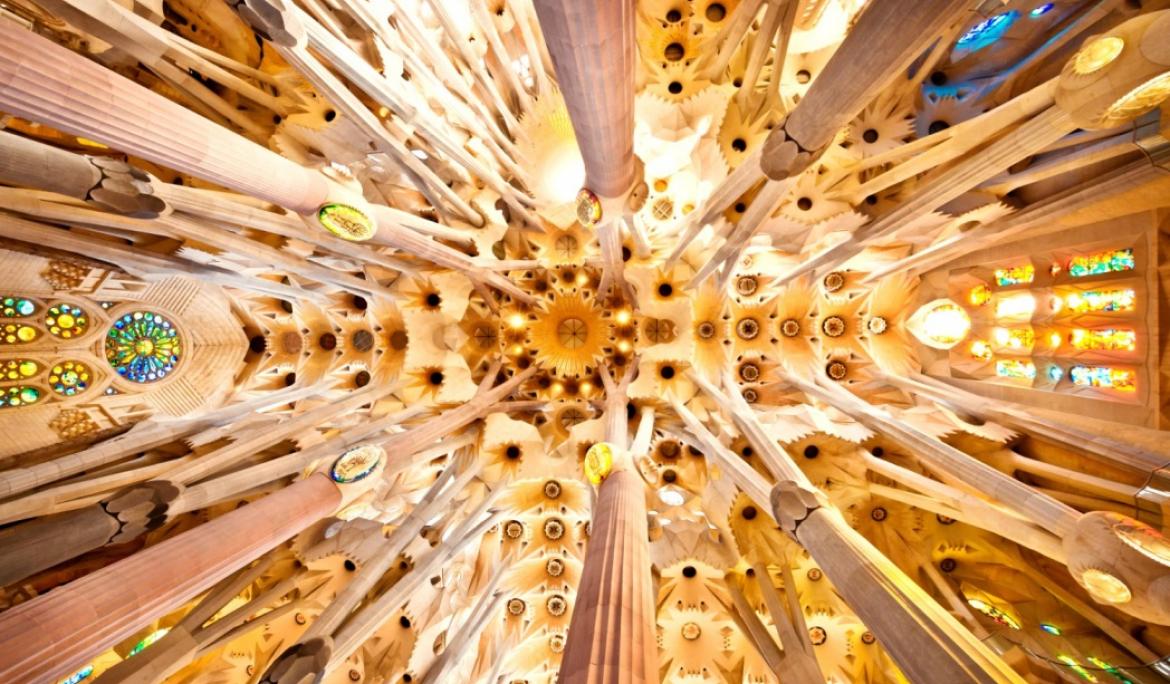
Simbolism in each stone
This solution allows one of the most characteristic elements of the Sagrada Familia: its verticality, which pursues the symbolic objective of rising towards God and which will be achieved when the 18 towers designed by Gaudí are completed.
Symbolism is evident in all three of the main facades: the Nativity facade, which is highly decorated and full of life, and the only one that Gaudí saw completed; the more austere and simplified Passion facade, representing the passion, death and resurrection of Christ which was designed by the sculptor Josep Maria Subirachs, and the Glory facade, much larger and more monumental than the others, and which is still under construction.
Antoni Gaudí, modernism with its own personality
Gaudí is considered the maximum modernist exponent and one of the artists who has given more emblematic works to the city. With an overflowing imagination, inspired by the organic forms of nature, Gaudí managed to develop a unique style that combines ornamental richness with architectural mastery.
Although his early works are not purely modernist, as they were influenced by other artistic movements, his first source of inspiration is already visible: nature. He was attracted to its shapes, colours and geometry. At the beginning of the 20th century, Gaudí's modernism was in full bloom evidenced by his organic shapes, mosaic and obsession to eliminate buttresses, while he projected the Park Güell, which is a true ode to nature.
The years before his death (1918-1926) were dedicated exclusively to his great project: the Sagrada Familia, where he merged his religious concerns and groundbreaking architectural ideas. A tram cut short his dream of seeing his life's work completed.
Other buildings by Gaudí that you can't miss:
- Casa Batlló
- Casa Milà-La Pedrera
- Park Güell
- Casa Vicens
- Palau Güel
